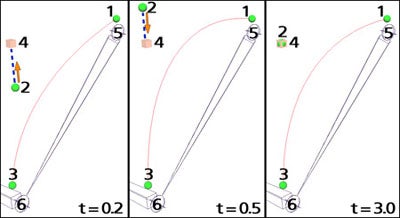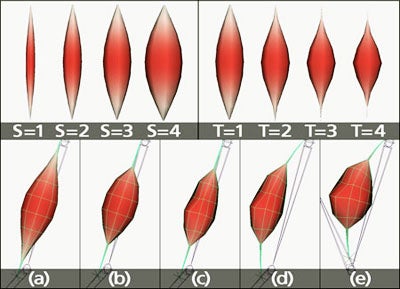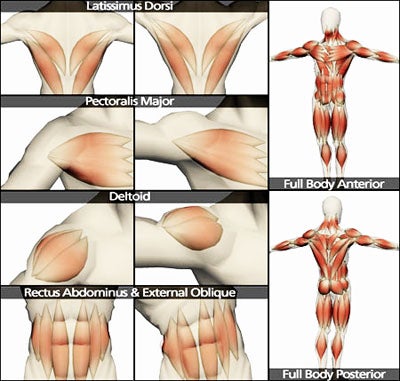Simplified Muscle Dynamics For Appealing Real-Time Skin Deformation
Lee Keng Siang

We propose significant simplifications in muscle modeling and simulation to facilitate real-time anatomical skin deformation for full-body articulated characters.
The muscle shape is a function of an animated quadratic Bezier action curve and control rings derived from it. The action curve is uniformly sampled to derive control rings driven by a scaled sinusoidal equation to model fusiform shapes. A single spring is attached between the central control point and the midpoint vector between the extreme control points of the Bezier action curve. Care is taken to stabilize local coordinates for each muscle vertex to enable glitch-free skin deformation.


The character’s polygonal mesh is smooth-skinned using a two-layered approach: first to the joints, and then to the muscle vertices.
Lastly we show how different prominent muscles can be reasonably approximated with the proposed fusiform model.

A typical 4000-vertex character skinned with sixty four 72-vertex muscles is able to run on an average CPU at 60-80 fps. Intuitive tools have been developed to aid the process of muscle creation, muscle shaping, dynamics simulation, as well as assignment of skin weights for joints and muscles.
Our main contribution is the simplified dynamics driven curved action-axis, which enables economical and expressive muscle animation. This opens up new levels of realism for real-time characters in games and interactive media.
This video shows our muscle system with and without muscle dynamics for comparison.
The skin of the character jiggles realistically when the dynamics are turned on.
For more details and results, please visit the official website at http://cg.skeelogy.com/research/simplified-muscle-dynamics.php.
